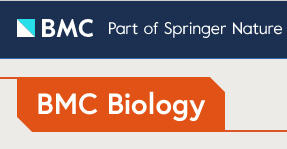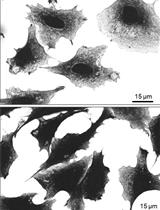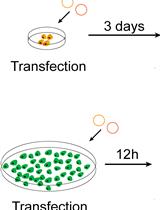- EN - English
- CN - 中文
In vitro Induction and Detection of Acrosomal Exocytosis in Human Spermatozoa
人精子中顶体胞吐作用的体外诱导和检测
(*contributed equally to this work) 发布: 2020年07月20日第10卷第14期 DOI: 10.21769/BioProtoc.3689 浏览次数: 4701
评审: Alexandros AlexandratosShweta Mayank BhagwatAnonymous reviewer(s)
Abstract
The acrosome reaction is a highly regulated exocytotic event that primes spermatozoa for successful fertilization. Upon induction, acrosomal exocytosis proceeds via a wave of vesiculation that radiates across the sperm head, destabilizing the acrosomal vesicle and resulting in the release of the acrosomal contents. Having shed their acrosome, spermatozoa are then capable of penetrating the outer vestments of the oocyte and initiating fertilization. Accordingly, the failure of spermatozoa to complete an acrosome reaction represents a relatively common etiology in male infertility patients, and the ability to induce acrosomal exocytosis has found clinical utility in the evaluation of sperm fertilizing capacity. Here, we firstly describe protocols for driving the capacitation of human spermatozoa in vitro using chemically defined media in order to prime the cells for completion of acrosomal exocytosis. We then describe methodology routinely used for the induction of acrosomal exocytosis incorporating either a physiological agonist (i.e., the steroidal hormone, progesterone) or pharmacological reagent (i.e., the divalent cation ionophore, A23187). Finally, we describe the application of histochemical and immunofluorescence techniques that can be applied to study the completion of the acrosome reaction. Such protocols have important diagnostic utility for sperm function testing in both clinical and andrological research laboratories.
Keywords: Acrosome (顶体)Background
Unique to the male gamete, the acrosome is a lysosome-like membranous organelle that adorns the anterior region of the sperm head and is delineated by both inner and outer acrosomal membranes (Hermo et al., 2010a and 2010b). The acrosomal vesicle, so formed, encapsulates a myriad of structural and enzymatic components that are compartmentalized into either soluble or insoluble fractions (Guyonnet et al., 2012; Guyonnet et al., 2014). The latter of these, termed the acrosomal matrix, functions as a stable scaffold that allows for the controlled release of matrix associated proteins necessary for fertilization during the acrosome reaction (Guyonnet et al., 2014). This reaction is a distinctive exocytotic event that is initiated by the formation of multiple sites of fusion between the outer acrosomal membrane and the overlying plasma membrane. As this vesiculation process propagates across the anterior region of the sperm head, it destabilizes the acrosomal vesicle leading to the formation of hybrid membrane vesicles and the concomitant release of acrosomal contents (Barros et al., 1967). This, in turn, renders the fertilizing spermatozoon competent to penetrate the formidable outer vestments of the oocyte and access the underlying oocyte plasma membrane (Buffone et al., 2008).
Recent work suggests that the acrosome reaction proceeds with relatively slow kinetics through several intermediary steps (Buffone et al., 2012; Stival et al., 2016). These distinctive features underscore the highly specialized nature of this secretory process and the likelihood that it is governed by complex molecular mechanisms. Accordingly, the ability to complete a physiological acrosome reaction necessitates that spermatozoa must have first undergone a functional maturation process known as capacitation (Aitken and Nixon, 2013). Capacitation occurs during sperm ascent of the female reproductive tract and incorporates numerous biochemical and biophysical changes, including the modulation of intracellular ion concentrations, hyperpolarization of the sperm plasma membrane, and the induction of signaling cascades, which culminate in increased protein phosphorylation (Nixon and Bromfield, 2018). While these collective processes prime the sperm cell for completion of an acrosome reaction, the nature of the physiological stimulus responsible for initiating this exocytotic event remains a matter of some controversy (Buffone et al., 2014); with candidate agonists including zona pellucida ligands, follicular fluid and/or progesterone (a steroidal hormone that sperm encounter within the oviduct prior to zona pellucida adhesion) (Tesarik, 1985). Alternatively, acrosomal exocytosis can be recapitulated in vitro using non-physiological pharmacological reagents, such as the divalent cation ionophore, A23187 (Jamil and White, 1981). Indeed, by directly facilitating Ca2+ influx, the A23187 ionophore is relatively forgiving of the need for intracellular signaling mechanisms and effector pathways that otherwise exert strict control over the progression of the acrosome reaction (Reid et al., 2012; Zhou et al., 2017).
Notably, the characteristics of acrosomal exocytosis driven by calcium ionophore differ from those elicited in response to physiological stimuli, such as solubilized zonae pellucidae (Liu and Baker, 1996). Specifically, ionophore induction leads to random vesiculation across the sperm head. By contrast, solubilized zonae pellucidae stimulates a more orderly loss of acrosomal components that begins at the posterior acrosome before proceeding in an anterograde direction (Buffone et al., 2009). Whilst these data lend support to the concept of receptor-mediated events controlling membrane fusion and release of acrosomal components, the limited availability of human zonae pellucidae prevents this resource being widely used as a physiological stimulus in assisted reproductive settings (Liu et al., 2003). Thus, despite its limitations, monitoring of the ability of spermatozoa to undergo an ionophore-induced acrosome reaction has become an important diagnostic criterion of human sperm function testing in clinical laboratories (Nixon and Bromfield, 2020).
Within the clinical setting, the impetus to study acrosomal exocytosis stems from evidence that a failure to complete this event represents a relatively common etiology associated with the defective spermatozoa of male infertility patients; potentially accounting for up to one-third of all cases of failed in vitro fertilization in couples taking recourse to assisted reproductive programs due to male factor infertility (Liu et al., 2001; Liu and Baker, 2003). However, in addition to prospective evaluation of semen quality, assaying the ability spermatozoa to complete an acrosome reaction has utility in the context of andrological research for development of male contraceptives and/or detection of the cytotoxic effects of various environmental insults (Katen et al., 2016; Houston et al., 2018 and 2019). Accordingly, here we describe optimized protocols for the induction and monitoring of human sperm acrosomal exocytosis in an in vitro setting.
Materials and Reagents
- 12-well glass microscope slides (Thermo Fisher Scientific, catalog number: MENX2XER202W )
- Ammonium acetate (Merck, catalog number: A7330 )
- Calcium chloride dihydrate (CaCl2·2H2O) (Merck, catalog number: C5080 )
- Calcium ionophore A23187 (Merck, catalog number: C7522 ), powder stored at 4 °C; stock solution aliquoted and stored at -20 °C
- Coomassie Brilliant Blue G-250 (Merck, catalog number: B0770 )
- D-glucose (Ajax, catalog number: 783 )
- DABCO (Merck, catalog number: D27802 )
- Dibutyryl cyclic adenosine monophosphate (Merck, catalog number: D0627 )
- Diff-Quik Differential Staining Kit (Dade Behring, catalog number: 564-850-02 )
- DPX Mountant (Merck, catalog number: 06522 )
- Eosin Y (Merck, catalog number: E4382 )
- Fluorescein isothiocyanate (FITC) conjugated PSA lectin from Pisum sativum (pea) (Merck, catalog number: L0770 ), stored at 4 °C
- Formaldehyde 37% v/v (Merck, catalog number: 252549 )
- Fructose (Merck, catalog number: F0127 )
- Glacial acetic acid (Biostrategy, catalog number: 20104.332 )
- Glycine (Merck, catalog number: G8898 )
- Ham’s F-10 Nutrient Mix (MP Biomedicals, catalog number: 091440049 )
- HEPES buffer (GE Healthcare, catalog number: SH30237.01 )
- Lectin from Pisum sativum (pea) (Merck, catalog number: L5380 ), stored at 4 °C
- Magnesium sulfate heptahydrate (MgSO4·7H2O) (Merck, catalog number: M5921 )
- Methanol (POCD Scientific, catalog number: Meth25P )
- Mowiol 4-88 (Merck, catalog number: 81381 ), powder stored at room temperature, solution aliquoted and stored at -20 °C
- Paraformaldehyde aqueous solution (Proscitech, catalog number: 15710 )
- Penicillin-Streptomycin (Merck, catalog number: P4458 )
- Pentoxifylline (Merck, catalog number: P1784 )
- Percoll (GE Healthcare, catalog number: 17-0891-01 ), stored at 4 °C
- Phosphate buffered saline (Merck, catalog number: P4417 )
- Polyvinyl alcohol (PVA) (Merck, catalog number: A8136 )
- Potassium chloride (KCl) (Merck, catalog number: P9333 )
- Potassium phosphate monobasic (KH2PO4) (Merck, catalog number: P5655 )
- Progesterone (Merck, catalog number: P0130 )
- Sodium bicarbonate (NaHCO3) (Merck, catalog number: S6297 )
- Sodium chloride (NaCl) (Merck, catalog number: S7653 )
- Sodium citrate (Merck, catalog number: S1804 )
- Sodium pyruvate (Merck, catalog number: P3662 )
- Sodium lactate (Merck, catalog number: L1375 )
- Tris (MP Biomedicals, catalog number: 152176 )
- Water, sterile-filtered, suitable for cell culture (Merck, catalog number: W3500 )
- Capacitating BWW (see Recipes)
- Coomassie Blue stain (see Recipes)
- HOS medium (see Recipes)
- Fixative for diluting sperm (see Recipes)
- Mowiol mounting solution (see Recipes)
- Non capacitating BWW (see Recipes)
- Percoll working solution (see Recipes)
- BWW stock solution (see Recipes)
Equipment
- Finnpipette F1 Variable Volume Pipettes (Thermo Fisher Scientific, 1 to 10 µl, 20 to 200 µl, 100 to 1,000 µl)
- Fluorescence Microscope (Zeiss, model: Axio Imager A1 )
- Biological Phase Contrast Microscope (Olympus, model: CX41 )
- Micro-Osmometer (Fiske, Model 210)
Procedure
文章信息
版权信息
© 2020 The Authors; exclusive licensee Bio-protocol LLC.
如何引用
Cafe, S. L., Anderson, A. L. and Nixon, B. (2020). In vitro Induction and Detection of Acrosomal Exocytosis in Human Spermatozoa. Bio-protocol 10(14): e3689. DOI: 10.21769/BioProtoc.3689.
分类
发育生物学 > 细胞信号传导 > 命运决定
细胞生物学 > 基于细胞的分析方法 > 免疫细胞化学
生物化学 > 蛋白质 > 标记
您对这篇实验方法有问题吗?
在此处发布您的问题,我们将邀请本文作者来回答。同时,我们会将您的问题发布到Bio-protocol Exchange,以便寻求社区成员的帮助。
Share
Bluesky
X
Copy link













